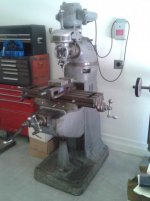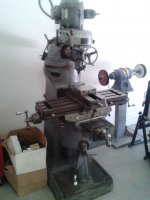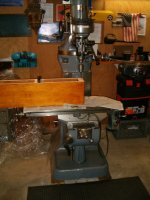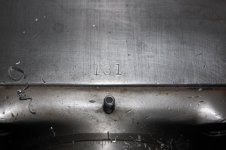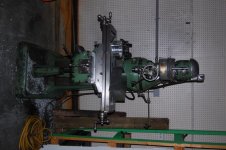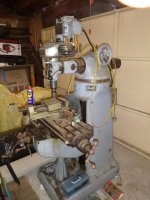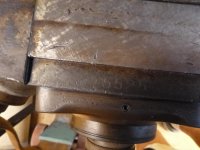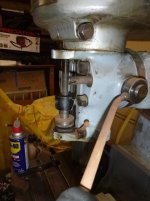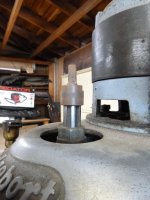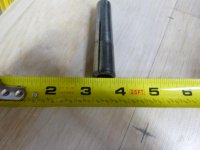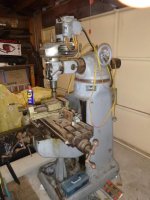For many years, Bridgeport used a "pancake" type motor. This was a motor which was larger in stator diameter, but short in height, sort of like an old-time coffee can. The motor on your round ram machine looks like it is either not original, or else was put on for some special purpose. It is possible that during WWII, the pancake type motors were in short supply, so the larger frame motor was put on. Another possibility is that someone modified to mill for a specific job and that bigger motor went onto it. The clue will be to check the horsepower rating. The Bridgeport head is kind of light duty to start with, so putting a bigger motor on would not accomplish much. Possibly, the mill was used in WWII aircraft work, and was doing a lot of high speed running, milling aluminum or similar materials. If the mill was in production work during WWII, possible the original pancake motor gave out, and the shop the mill was in retrofitted the quickest thing they could find to get the mill back into production work.
I've got a ca 1972 Bridgeport with the newer "J" head. By 1972, Bridgeport had stopped using the "pancake" type motors, and used a flange-mounted motor with a more commonly available frame size. I know who the last owner of my Bridgeport was prior to my getting it, but if he was the original owner, there is no way of knowing. What I do know is in the late 1960's, as defense production work for the Vietnam War ramped up, Bridgeports became a "hot commodity". People got on a waiting list for new Bridgeports. Used Bridgeports were commanding insane prices. A lot of Bridgeports in that time period were ordered with dual heads and set up with hydraulic tracer equipment. My Bridgeport, being a 1972 machine, came in at the tail end of the Vietnam era, so not telling where it went when new. The dealer who sold the mill new is out of business, so the trail ends as far as I can tell. If anyone has means of tracking Bridgeport serial numbers and original purchasers, I'd be interested to know.

